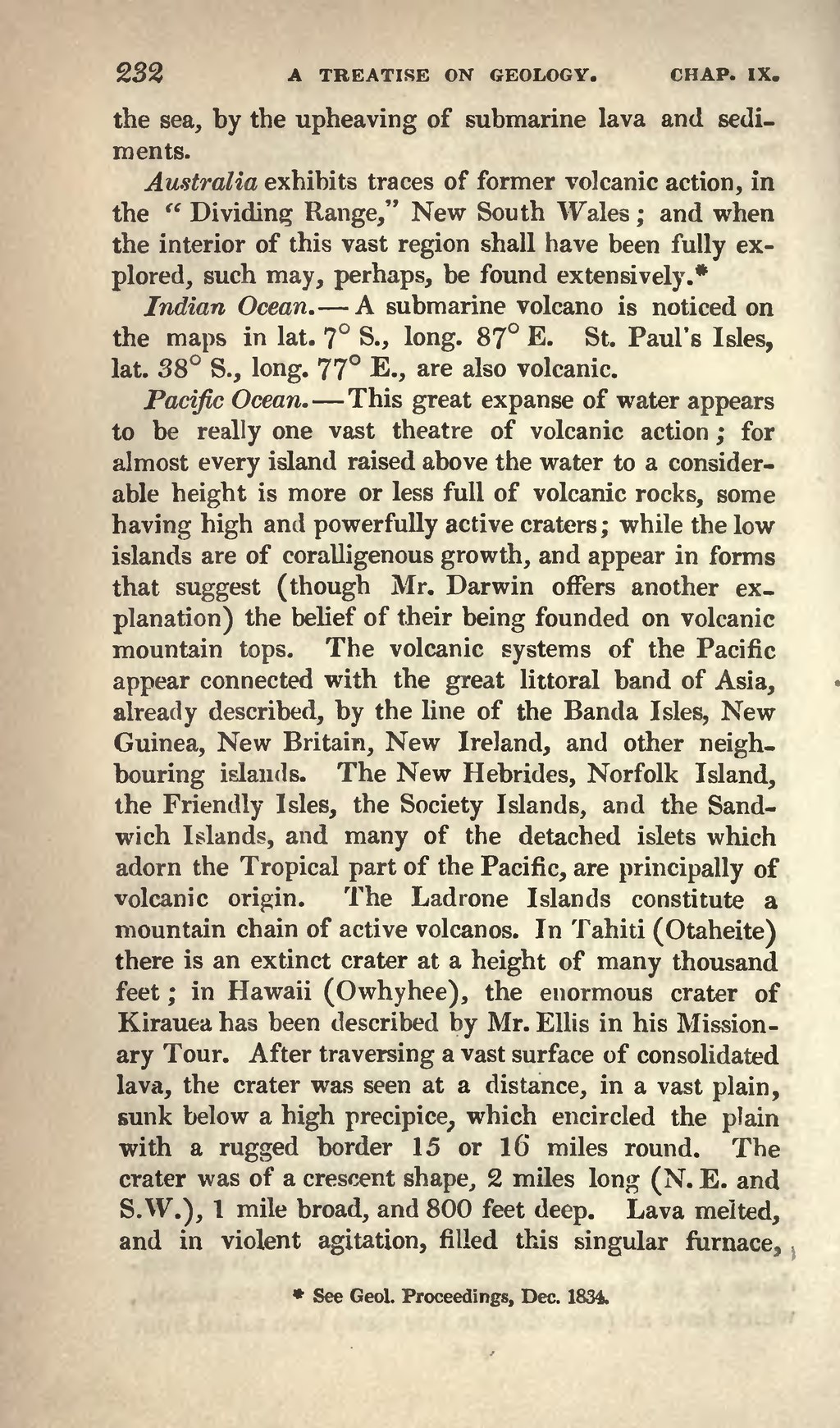the sea, by the up heaving of submarine lava and sediments.
Australia exhibits traces of former volcanic action, in the "Dividing Range," New South Wales; and when the interior of this vast region shall have been fully explored, such may, perhaps, be found extensively.[1]
Indian Ocean.—A submarine volcano is noticed on the maps in lat. 7° S., long. 87° E. St. Paul's Isles, lat. 38° S., long. 77° E., are also volcanic.
Pacific Ocean.—This great expanse of water appears to be really one vast theatre of volcanic action; for almost every island raised above the water to a considerable height is more or less full of volcanic rocks, some having high and powerfully active craters; while the low islands are of coralligenous growth, and appear in forms that suggest (though Mr. Darwin offers another explanation) the belief of their being founded on volcanic mountain tops. The volcanic systems of the Pacific appear connected with the great littoral band of Asia, already described, by the line of the Banda Isles, New Guinea, New Britain, New Ireland, and other neighbouring islands. The New Hebrides, Norfolk Island, the Friendly Isles, the Society Islands, and the Sandwich Islands, and many of the detached islets which adorn the Tropical part of the Pacific, are principally of volcanic origin. The Ladrone Islands constitute a mountain chain of active volcanos. In Tahiti (Otaheite) there is an extinct crater at a height of many thousand feet; in Hawaii (Owhyhee), the enormous crater of Kirauea has been described by Mr. Ellis in his Missionary Tour. After traversing a vast surface of consolidated lava, the crater was seen at a distance, in a vast plain, sunk below a high precipice, which encircled the plain with a rugged border 15 or 16 miles round. The crater was of a crescent shape, 2 miles long (N. E. and S.W.), 1 mile broad, and 800 feet deep. Lava melted, and in violent agitation, filled this singular furnace,
- ↑ See Geol. Proceedings, Dec. 1834.
